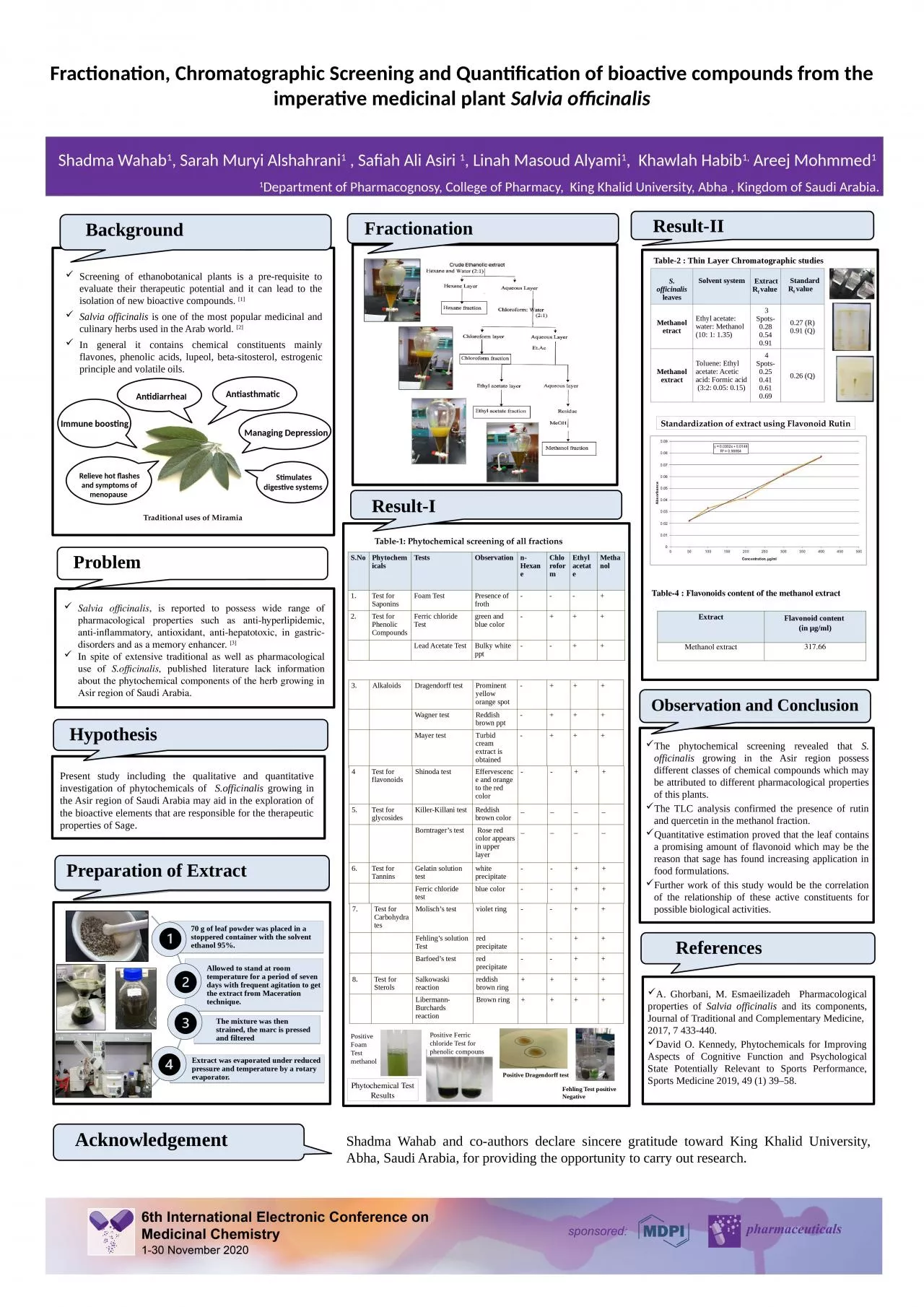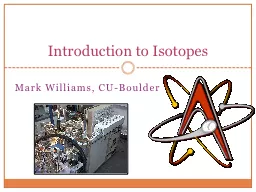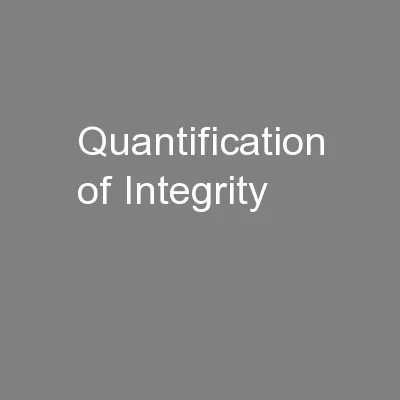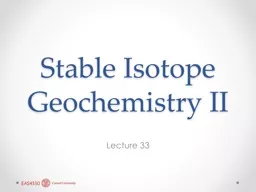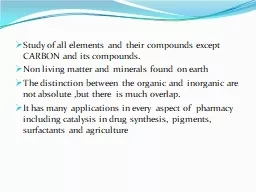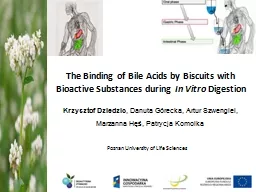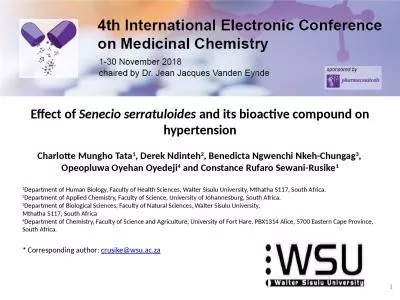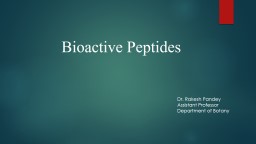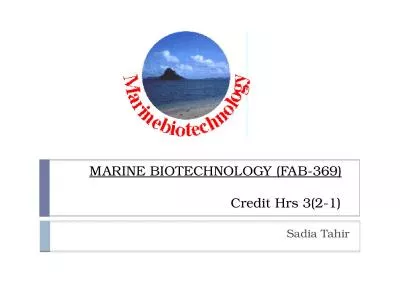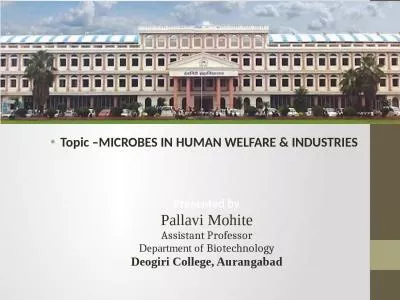PPT-Fractionation, Chromatographic Screening and Quantification of bioactive compounds from
Author : belinda | Published Date : 2022-07-01
Salvia officinalis Shadma Wahab 1 Sarah Muryi Alshahrani 1 Safiah Ali Asiri 1 Linah Masoud Alyami 1 Khawlah Habib 1 Areej Mohmmed 1 1 Department of Pharmacognosy
Presentation Embed Code
Download Presentation
Download Presentation The PPT/PDF document "Fractionation, Chromatographic Screening..." is the property of its rightful owner. Permission is granted to download and print the materials on this website for personal, non-commercial use only, and to display it on your personal computer provided you do not modify the materials and that you retain all copyright notices contained in the materials. By downloading content from our website, you accept the terms of this agreement.
Fractionation, Chromatographic Screening and Quantification of bioactive compounds from: Transcript
Download Rules Of Document
"Fractionation, Chromatographic Screening and Quantification of bioactive compounds from"The content belongs to its owner. You may download and print it for personal use, without modification, and keep all copyright notices. By downloading, you agree to these terms.
Related Documents

